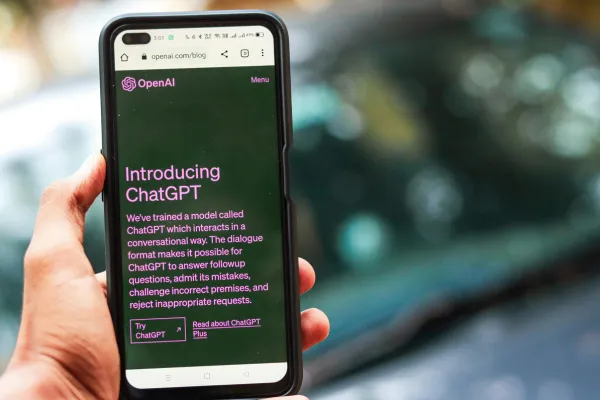
How AI Is Changing Digital Marketing (And What It Means for Small Businesses)
AI. It’s the buzzword that’s showing up everywhere—from social media feeds to boardroom conversations.
And for good reason: Artificial Intelligence (AI) is changing the way we approach digital marketing. Fast.
But if you’re a small business owner or marketing manager, here’s the big question you’re probably asking:
“Is AI something I should care about… or is it just another trend that’ll fade away?”
Let’s break it down:
What’s actually changing with AI in marketing?
What should small businesses know?
And how can you use AI tools (without feeling overwhelmed)?
First Things First: What Do We Mean by AI in Marketing?
When we talk about AI in digital marketing, we’re not talking about robots taking over your job or writing your next blog post from scratch (well… not yet, anyway).
We’re talking about AI-powered tools that help marketers and business owners:
✅ Analyze data faster
✅ Personalize campaigns
✅ Automate repetitive tasks
✅ Generate content drafts
✅ Predict customer behavior
In short: AI helps you do more with less—faster, smarter, and often cheaper.
5 Major Ways AI Is Already Changing Digital Marketing
Here’s where we’re seeing AI have the biggest impact right now:
1. Smarter Audience Targeting
AI tools are helping marketers understand their audiences better than ever before.
Platforms like Google Ads and Meta (Facebook/Instagram) Ads now use machine learning to automatically adjust targeting based on:
Who’s clicking
Who’s converting
What time of day users engage
Which devices or locations perform best
For small businesses, this means you can run more effective ads without being a full-time data analyst.
👉 What you should do:
If you’re running ads, take advantage of AI-driven features like Smart Campaigns, Performance Max campaigns, or Meta Advantage+ Audience targeting.
2. Automated Content Creation (Yes… Even Blogs and Social Posts)
AI tools like ChatGPT, Jasper, and Copy.ai are making it easier to draft:
Blog posts
Social media captions
Ad copy
Email subject lines
But here’s the catch:
AI can help speed up writing—but it shouldn’t replace your human touch.
AI-generated content still needs:
Fact-checking
Personalization
Tone adjustments
Brand voice editing
👉 What you should do:
Use AI tools as a starting point—not the final product. Let them help you brainstorm, outline, or write first drafts.
3. Better Email Marketing Personalization
AI is making email marketing smarter by helping businesses:
Personalize subject lines and body content
Send emails at the best time for each subscriber
Segment audiences based on behavior
Tools like HubSpot, Mailchimp, and Klaviyo now offer AI-driven send-time optimization and predictive segmentation.
👉 What you should do:
If your email platform has AI tools built in, test features like Smart Send Times or AI-generated subject line suggestions.
More personalization = better open and click-through rates.
4. Improved Chatbots and Customer Support
AI chatbots have come a long way.
Today’s bots can:
Answer FAQs
Qualify leads
Book appointments
Even help with simple ecommerce transactions
For small businesses, an AI chatbot on your website or social page can help you stay responsive without hiring extra staff.
👉 What you should do:
Consider adding an AI chatbot (like Tidio, Drift, or Intercom) to handle basic customer questions and lead capture.
5. Predictive Analytics and Smarter Reporting
AI is helping marketers move from “reactive” to “proactive” decision making.
Instead of just looking at past results, AI tools can now help predict future customer behavior like:
Which leads are most likely to convert
When customers are likely to churn
Which products might perform best in an upcoming promotion
Platforms like Google Analytics 4 (GA4) and HubSpot are already integrating predictive insights.
👉 What you should do:
Review your analytics tools. Are they giving you just data—or actual recommendations and forecasts?
If you’re still buried in spreadsheets, it might be time to upgrade.
Should Small Businesses Be Worried About AI Taking Over Marketing Jobs?
Short answer: No.
AI is a tool, not a replacement for human marketers.
Here’s why businesses still need human strategy:
✅ AI doesn’t understand your unique brand voice like you do
✅ AI lacks emotional intelligence and creativity
✅ AI tools still need human oversight for accuracy and quality
Think of AI as your assistant—not your replacement.
It helps with repetitive tasks, speeds up processes, and offers insights… but it still needs a human to steer the ship.
How Small Businesses Can Start Using AI (Without Getting Overwhelmed)
If you’re new to AI tools, don’t feel like you have to dive into everything all at once.
Here’s a simple starting roadmap:
Start with content tools: Try AI writing assistants for blog outlines or social captions
Use AI-powered ad targeting: Let Google or Meta optimize your audience targeting automatically
Add AI-driven email features: Test subject line generators or send-time optimization
Consider an AI chatbot: Especially if you get a lot of website inquiries
Review your analytics: See if your current tools offer predictive insights or recommendations
👉 Most importantly: Don’t lose sight of your audience. AI helps with execution, but real connection still comes from authentic human communication.
Final Thought: AI Isn’t Replacing Marketers… It’s Empowering Them
AI isn’t a threat to small businesses—it’s an opportunity.
It lets you compete smarter. It helps stretch your budget. And it saves time you can put toward bigger-picture strategy.
If you’ve been hesitant to explore AI tools in your marketing… now’s a good time to start experimenting.
The businesses that adapt early are the ones that see the biggest benefits.
Want help blending AI tools with human strategy for better marketing results?
Let's connect!